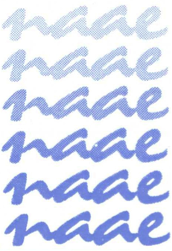Publications
More than words can say: a view of literacy through the arts
This collection of papers defines what is meant by ‘literacy’ in each of the art forms: dance, drama, media, music, visual art and design. The collection will stimulate discussion and raise awareness of the potential for the arts to enhance learning across the curriculum.
‘Engaging in quality arts processes and experiences not only enhances students’ emotional and social wellbeing and artfulness – it fosters lifelong literacies’—Professor Robyn Ewing AM.
Contents
A view of literacy through the arts (Joan Livermore)
Visual literacy (Lee Emery & Adele Flood)
Design literacy: process & product (Keith Russell, Kathryn Grushka & Howard Middleton)
The language of dance (Ralph Buck & Sue Fox)
Music literacy in the information technology age (Margaret S. Barrett)
The language of drama: making and communicating meaning (Robin Pascoe)
Media literacy and the information age (Roger Dunscombe & Colin Stewart)
Sampling the Arts
This book shares some practical ideas and experiences of a group of primary and secondary arts teachers who came together for a series of workshops called The Work Samples project.
Sampling the Arts tells real-life stories of teachers which give insight into how they organised the learning experience for their students; how the students responded; how the teachers tackled the task of assessing levels of achievement.
The lesson samples present a brief school profile and class description, and cover aims, preparation, equipment & resources used, processes, teacher intervention and skills & techniques. It includes teachers’ annotations and assessment ideas, student remarks and comments from the editor in response to the most consistent concerns arising when teaching arts subjects in schools. Subject areas covered are dance, drama, media, music and visual arts.
The Mayer key competencies in arts education
Originally published in 1997, this report is even more significant today in light of the new National Curriculum. The Mayer Key Competencies is useful for anyone teaching or assessing arts learning in the curriculum because it shows how the key competencies may be applied across the five arts areas. It explains how the concept of ‘competency’ makes sense in the arts field.
The publication was the major outcome of a project conducted by the National Advocates for Arts Education (NAAE) and the Australian Council for Educational Research (ACER) on behalf of the Commonwealth Department of Employment and Education, Training and Youth Affairs (DEETYA).
Contents
Outline of the project
Some important issues
Assessing the key competencies
Links with industry
Collecting, analysing & organising information
Communicating ideas and information
Planning and organising activities
Working with others and in teams
Using mathematical ideas and techniques
Solving problems
Using technology
Cultural understandings
Acquiring the key competencies through the arts
Reflections and discussion

